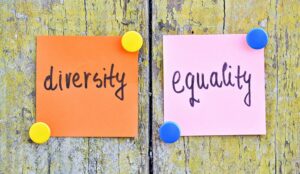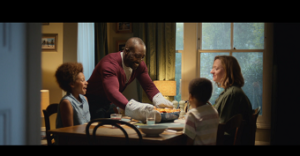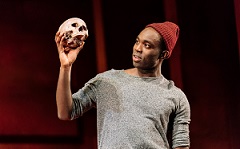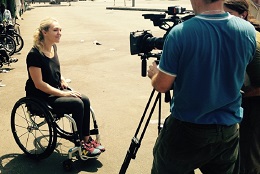Where diversity and reality meet …
Both contributors to this organ and its followers know that the Rust’s mission statement is built around its stance of providing a “window upon the world” from the point of view of those of us who have passed beyond “the first flush of youth” yet retain possess an independence of mind and the ability to tell things as they see them without fear or favour.
 It is in that spirit that I offer my post today.
It is in that spirit that I offer my post today.
It often seems to me – and indeed others that I consort with and/or meet with when out and about, the majority of them admittedly of similar vintage to myself – that a notable and irritating aspect of the 21st Century obsession with “woke” culture and equality/diversity is a certain disconnect from logic and reality.
Let me expand.
 It would seem that behind majority of “woke” initiatives which these days seem to dominate the minds of politicians, equality & diversity activists and indeed media commentators everywhere is the presumption that the “disadvantaged” – whether they be female, transgender, “gender fluid”, gay, pansexual, blind, deaf, disabled, from the BAME community, single parents, educationally sub-normal, autistic, dyslexic, sufferers of ADHD, unemployed, non-drivers, flat Earth believers, or even Scottish – are (unfairly) under-represented in terms of the amount of “visibility” they are afforded in our everyday life.
It would seem that behind majority of “woke” initiatives which these days seem to dominate the minds of politicians, equality & diversity activists and indeed media commentators everywhere is the presumption that the “disadvantaged” – whether they be female, transgender, “gender fluid”, gay, pansexual, blind, deaf, disabled, from the BAME community, single parents, educationally sub-normal, autistic, dyslexic, sufferers of ADHD, unemployed, non-drivers, flat Earth believers, or even Scottish – are (unfairly) under-represented in terms of the amount of “visibility” they are afforded in our everyday life.
 Part of the drive from all sides and parties concerned with this “problem” is directed to addressing the situation via positive action seeking to improve the frequency with which the aforementioned” disadvantaged” are seen and heard on TV and radio, in theatrical productions, on chat shows, sports punditry panels – and so on, ad infinitum.
Part of the drive from all sides and parties concerned with this “problem” is directed to addressing the situation via positive action seeking to improve the frequency with which the aforementioned” disadvantaged” are seen and heard on TV and radio, in theatrical productions, on chat shows, sports punditry panels – and so on, ad infinitum.
 Inevitably perhaps this notion has its complications, many of which have two (or even more) sides, none of which provide an easy – or sometimes any – solution.
Inevitably perhaps this notion has its complications, many of which have two (or even more) sides, none of which provide an easy – or sometimes any – solution.
Here are some examples.
Can or should a white actor be allowed to play Othello in Shakespeare’s play of that name?
 The push-back argument, of course, would be mined from the theme of “Why cannot a white man ‘act black’ in order to perform the part of Othello – or, alternatively, why cannot a black actor, or a disabled actor, or a female actor, play the part of James Bond if they’re good enough? Indeed, why should there be any limitations at all upon what type of person plays any fictional character … or indeed any person from the historical past?”
The push-back argument, of course, would be mined from the theme of “Why cannot a white man ‘act black’ in order to perform the part of Othello – or, alternatively, why cannot a black actor, or a disabled actor, or a female actor, play the part of James Bond if they’re good enough? Indeed, why should there be any limitations at all upon what type of person plays any fictional character … or indeed any person from the historical past?”
From that last query springs another aspect of the issue.
How authentic does any dramatic presentation have to be?
 To take an example on this point: if a play is going to be mounted – or a film produced – about the life of (say) Napoleon, King Charles II, Winston Churchill or Guy Fawkes, can the lead part be played by a disabled actor, or a black one, a blind one, or indeed a female one … and be “believable”?
To take an example on this point: if a play is going to be mounted – or a film produced – about the life of (say) Napoleon, King Charles II, Winston Churchill or Guy Fawkes, can the lead part be played by a disabled actor, or a black one, a blind one, or indeed a female one … and be “believable”?
Perhaps compelling arguments can be made both ways.
 Which brings me to another matter that I referred to previously in passing.
Which brings me to another matter that I referred to previously in passing.
The argument that, in order to improve UK society and the way we view ourselves, “the disadvantaged” should be fairly “represented”.
What does “fairly represented” mean in this context?
 There’s a freely-admitted degree of perhaps “the lady doeth protest to much” in my next comment.
There’s a freely-admitted degree of perhaps “the lady doeth protest to much” in my next comment.
Although I don’t regard myself as racist, I sometimes cannot but feel slightly uncomfortable with – what appears to me to be – the obsession with the preponderance of BAME people that appear (for example) to be every drama cast and indeed advertisement I see on television.
To be blunt about it – it now seems obligatory that a least one person of BAME origin (or preferably even a BAME couple) has to appear in every TV commercial.
 I acknowledge there may be something in the argument that – to increase, indeed cement, acceptance – one may have to over-represent certain sections of society, at least for a period.
I acknowledge there may be something in the argument that – to increase, indeed cement, acceptance – one may have to over-represent certain sections of society, at least for a period.
However – on the other hand – if, for example, the number of people in any given section of society is no more than (for example) 10% of the total population, surely the percentage of them that should be presented in drama productions and/or on sports punditry panels should be a similar % (if the case being made is that all sections of society should be accurately represented)?
I was reminded of this subject generally this morning when I came across this piece by Paul Revoir, media editor, on the findings of a new study by the Creative Diversity Network, that appears upon the website of the – DAILY MAIL

